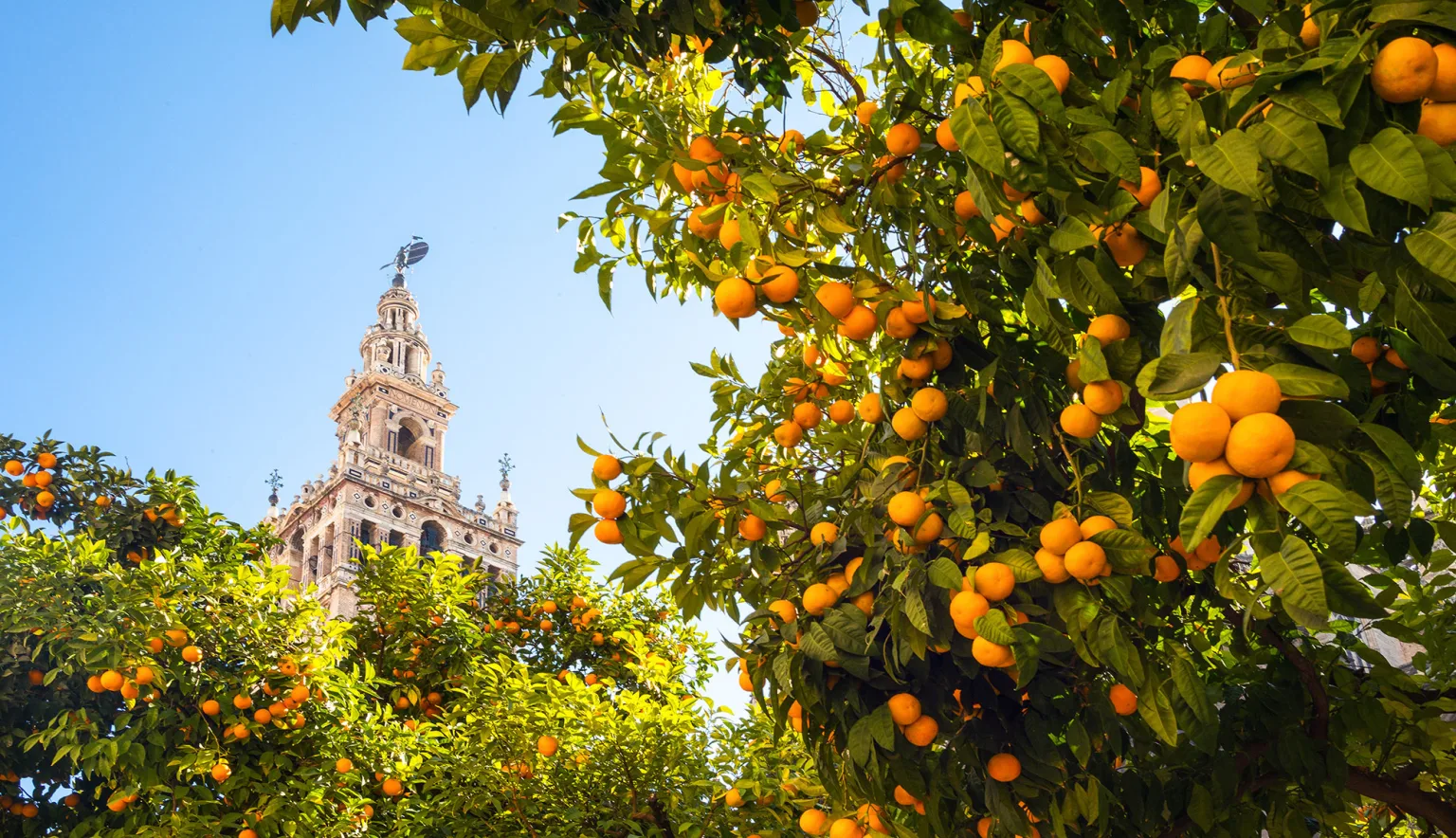For a weekend city break in Europe oozing with history, head to Seville, the cultural capital of Southern Spain.
A WEEKEND IN SEVILLE
Flicking through my local papers last week, I pause at a headline bemoaning a county wide shortage of oranges. Along with the sourdough-starters and banana bread bakers, the marmalade-makers have taken to the shelves in a fury, leaving farm shops and supermarkets across Norfolk in dismally short supply of Seville oranges.
Just reading of the fruit transports me back to almost exactly one year ago on the streets of Seville, the last time my passport had an outing. Here, full-bodied bitter oranges fell in abundance with a gentle thud on the cobblestones of the centro historico. One of the happiest fruits in appearance, pleasing in its rotund form and bold colours, I reflect on the current shortage as a fitting metaphor for a relatively bleak month of housebound ennui and the senescence of nature taking place outside.
For lovers of culture, history and gastronomy, Seville is the ideal introduction to Spain, offering all the celebrated cornerstones of Spanish culture. As to why there are so many oranges in the city, there are varying answers, but my favourite is that the species seen throughout the city streets was introduced to Seville from Asia by way of some Genoese sailors, where the number of orange trees planted on an estate was an indication of the happiness of its owner.
We find our lodgings in Seville in the Alameda de Hércules, once a troublesome barrio that up until 15 years ago was closed to tourists as a disreputable domain. At the centre of it all, four towering Corinthian columns topped with marble sculptures of Hercules oversee the plaza beneath.
Other tales would have it that this lionskin-clad hero is responsible for bringing the golden fruit to the city. Now the late-night habitat of students, singles and thirty-somethings, the square is fringed with a selection of sheesha bars, and questionable themed nightclubs but we stop here for a cerveza or two later that evening and wander home as the whine of a saxophone carries from the jazz bar on the corner. It is the perfect neighbourhood for our visit, with all the city’s major attractions within walking distance.
On Saturday morning, we jostle with the tourist masses and wait to enter the Royal Alcazar in a queue that skirts the astounding Gothic Cathedral. It is the busiest that we see the city on our trip, the queue likely increased by the Alcazar’s appearance as the famous Water Gardens of Dorne in Game of Thrones. Our patience is surpassed by the jaded ranks of horses that stand hitched to picturesque black carriages, stood perfectly still except for frothing tongues and whisking tails. Inside the fourteenth century palace, originally built as the Royal Court, or Mudejar of King Pedro the Wise, decorative tiles are cool to the touch as we navigate labyrinthine corridors, vaulted underground chambers and elaborate courtyards that sing of centuries gone by. Fine marble modelled with the delicacy of fine lace casts geometric shadows across the flagstones and gold ceilings dazzle overhead.
In the serene gardens, the smell of orange blossom, azahar, fills the air, marred only by the sulphuric scent of Neptune’s Fountain as it spews rivulets of green water. Peacocks strut through the perfumed grounds while parakeets of brilliant green swoop overhead between the towering palm trees.
Afterwards, walking along the banks of the Guadalquivir River, the dodecagonal form of the aptly named Torre del Oro casts a golden reflection across the water’s shimmering breadth. The impressive watchtower has stood sentry over this stretch of river since its construction in the 12th century by the Almohad Caliphate. Pausing on the riverbank, we gorge on sumptuous orange ice cream, the speciality at a nearby gelateria. To this day I can practically taste the citrus on my tongue, like eating sunshine. Mimicking the habits of the city’s inhabitants, we dine late, and choose to eat at the unbelievably Instagram-worthy El Pinton restaurant, feasting on tuna croquetas followed by seafood paella.
On a cool but sun-blessed Sunday morning, we join the chic sevillanos in their weekly paseos (strolls), through the lush grounds of the Maria Luisa Park. Continuing to the magnificent Plaza de España, we marvel at this ostentatious exercise in Spanish architecture that was constructed for the Ibero-American Exposition of 1929, encompassing Baroque, Renaissance and Moorish influences. In a shaded alcove, we pause to admire a flamenco performance. It is as if Carmen herself, the city’s gypsy heroine, were embodied before us, as the dancer stamps her feet in a dizzyingly rapid succession on the flagstones.
Short on time, we forego the magnificent Catedral de Sevilla, and instead walk across town to what is known as the Cathedral of Bullfighting – the Real Maestranza de Caballería, the oldest bullring in Spain. Here we take a tour and get chills in the atmospheric chapel where matadors would make their peace with God and take one last sip of water from a humble ceramic jug sat in the corner before entering the arena. Afterwards, under the severed heads of young bulls that have been mounted on the walls, we sip small glasses of beer, known as cañas in Pepe Hillo just across the street, where locals would relive the drama of the bullfight over a drink after the show.
Before dusk falls, we cross the river and wander through the bohemian quarter of Triana, pausing for exquisite Iberian ham and Spanish wine on the rooftop of the Mariatrifulca restaurant on the Puente de Triana as the sun sinks into the water. With wine on our lips and smiles on our faces, we are full of excitement and hope. It is one of those precious travel memories that I choose to return to in these trying times, knowing in that moment that I will surely return to this city. Although it is January, the sun is bright and big. Just like an orange.





















